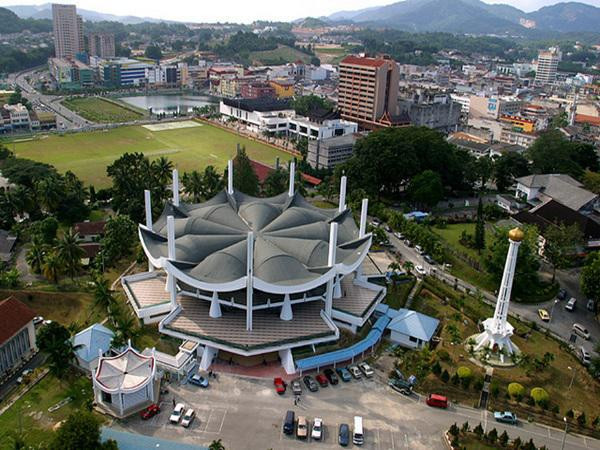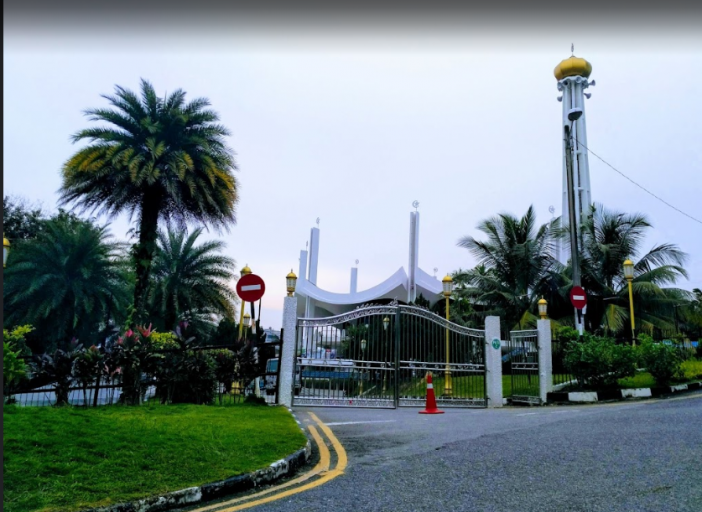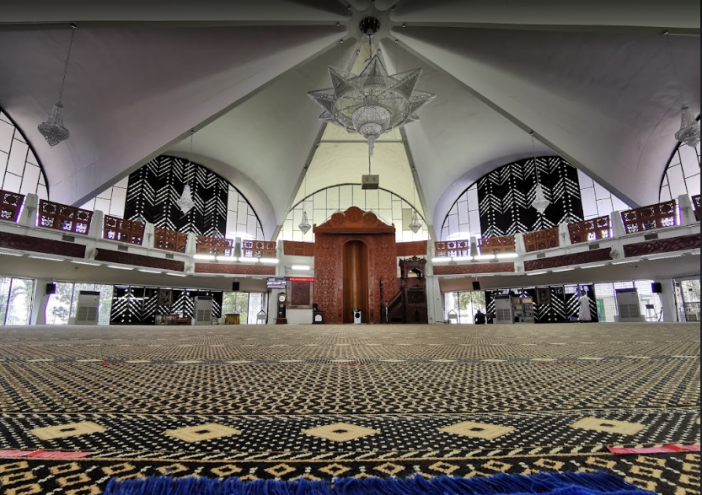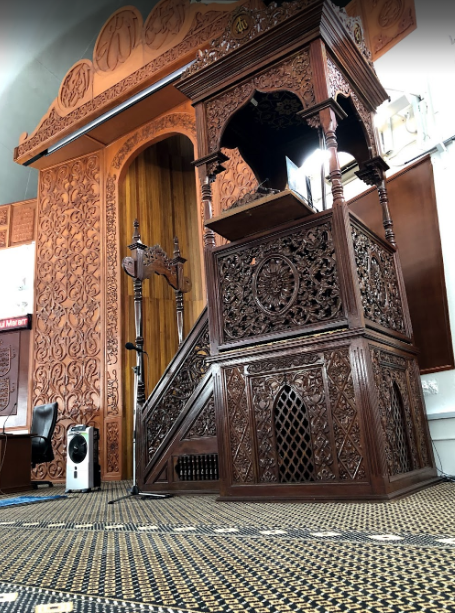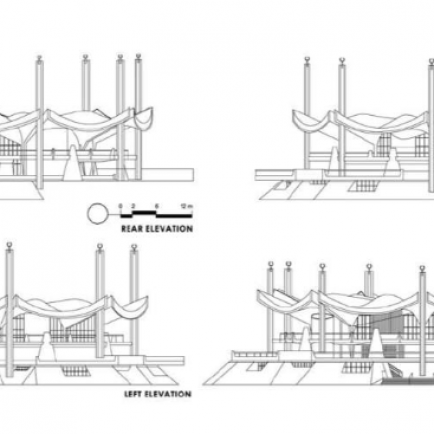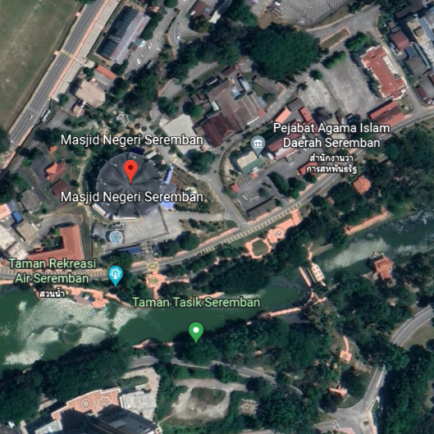Negeri Sembilan State Mosque
History
Back within the early 60s, Seremban located 65km south of Kuala Lumpur, experienced quick growth in advancement and population. As a result the old Jamek Mosque of Seremban, built in 1928 with the same plan as Malacca’s traditional mosque, was now not sufficient to cater for the growing number of worshippers. The state government of Negeri Sembilan chosen to construct a new mosque that would serve as the state mosque to supplant the Jamek Mosque. The proposed area for the modern mosque was on a slope confronting Seremban Lake Plant, a brief distance from the city centre.
Urban and Architectural
It houses the main prayer hall with a female prayer gallery, meeting rooms, dining halls, toilets and ablution facilities and its offices. In the basement are the meeting rooms, men’s and women’s dining halls, and the sanitary and ablutions facilities.
The most significant formal and image-making features of this two-storey mosque are those of its concrete structure. The mosque is shaped as a nine-sided polygon topped with the parasol roof form. The nine sides represent the state’s nine districts and the origin of the state’s name. Its parasol roof is a hyperbolic concave concrete shell anchored by nine towers. These towers are in effect minarets, each topped with a star-and-crescent finial, symbolic of Islam. These minarets are, however, considered secondary. The main minaret was built separately, detached from the main building. On the first floor, the outdoor terraces around the building are supported by nine conical buttresses rising from the ground level.
The mosque has two entrances, one from the car park on the north side with a ramp, while the main entrance is on the east facade. As one enters the prayer hall, he/she will be awed by the massive, open, and generously illuminated polygon space with a 360-degree view of the surroundings, thanks to the glass walls. These walls, however, are partially modulated using carved timber screens that cast attractive patterns of dark and light into the hall. They and are also used as partitions to provide privacy for the women’s galleries that are connected directly to the surrounding terraces. The all-around openings provide inlets and outlets for sufficient cross natural ventilation, giving a thermally comfortable indoor environment. Within this prayer hall, the bold-and-sculptural shaped mihrab structure rises vertically and pierces the gallery above.
Description
Negeri Sembilan State Mosque sits on a 5-acre hilly site surrounded by the verdant Seremban Lake Garden, making it visible from far, giving a sense of arrival to the Seremban city.
Details
Location
Jalan Dato Hamzah, Seremban, 70000 Seremban, Negeri Sembilan, Malaysia
Worshippers
3000
Owners
Negeri Sembilan Government
Architect Name
Year of Build
1967
Area
2000
Drawings
Map
History
Back within the early 60s, Seremban located 65km south of Kuala Lumpur, experienced quick growth in advancement and population. As a result the old Jamek Mosque of Seremban, built in 1928 with the same plan as Malacca’s traditional mosque, was now not sufficient to cater for the growing number of worshippers. The state government of Negeri Sembilan chosen to construct a new mosque that would serve as the state mosque to supplant the Jamek Mosque. The proposed area for the modern mosque was on a slope confronting Seremban Lake Plant, a brief distance from the city centre.
Urban and Architectural
It houses the main prayer hall with a female prayer gallery, meeting rooms, dining halls, toilets and ablution facilities and its offices. In the basement are the meeting rooms, men’s and women’s dining halls, and the sanitary and ablutions facilities.
The most significant formal and image-making features of this two-storey mosque are those of its concrete structure. The mosque is shaped as a nine-sided polygon topped with the parasol roof form. The nine sides represent the state’s nine districts and the origin of the state’s name. Its parasol roof is a hyperbolic concave concrete shell anchored by nine towers. These towers are in effect minarets, each topped with a star-and-crescent finial, symbolic of Islam. These minarets are, however, considered secondary. The main minaret was built separately, detached from the main building. On the first floor, the outdoor terraces around the building are supported by nine conical buttresses rising from the ground level.
The mosque has two entrances, one from the car park on the north side with a ramp, while the main entrance is on the east facade. As one enters the prayer hall, he/she will be awed by the massive, open, and generously illuminated polygon space with a 360-degree view of the surroundings, thanks to the glass walls. These walls, however, are partially modulated using carved timber screens that cast attractive patterns of dark and light into the hall. They and are also used as partitions to provide privacy for the women’s galleries that are connected directly to the surrounding terraces. The all-around openings provide inlets and outlets for sufficient cross natural ventilation, giving a thermally comfortable indoor environment. Within this prayer hall, the bold-and-sculptural shaped mihrab structure rises vertically and pierces the gallery above.
Description
Negeri Sembilan State Mosque sits on a 5-acre hilly site surrounded by the verdant Seremban Lake Garden, making it visible from far, giving a sense of arrival to the Seremban city.


